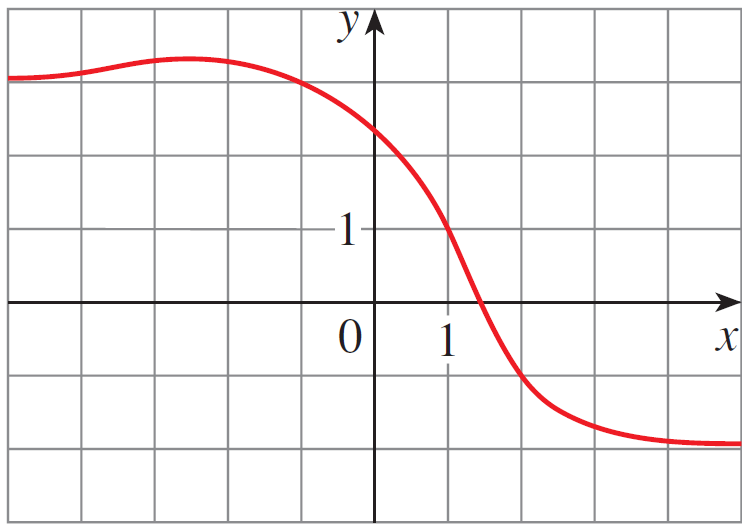2.2: Limits of Functions at Infinity
In this section, instead of looking at \[\lim_{n\rightarrow\infty} a_n\] we are interested in \[\lim_{x\rightarrow\infty} f(x)\]
*picture in class*
Definition of a Limit at Infinity
The function $f$ has the limit $L$ as $x$ increases without bound (meaning $x\rightarrow \infty$), written as \[\lim_{x\rightarrow \infty}f(x) = L\] if $f(x)$ can be made arbitrarily close to $L$ by taking $x$ large enough.
Similarly, the function $f$ has the limit $M$ as $x$ decreases without bound (meaning $x\rightarrow -\infty$), written as \[\lim_{x\rightarrow -\infty}f(x) = M\] if $f(x)$ can be made arbitrarily close to $M$ by taking $x$ to be a sufficiently large negative number.
If $L$ or $M$ from above exist, then $f(x)$ has a horizontal asymptote.
 find $\displaystyle\lim_{x\rightarrow \infty} f(x)$ and $\displaystyle\lim_{x\rightarrow -\infty} f(x)$
find $\displaystyle\lim_{x\rightarrow \infty} f(x)$ and $\displaystyle\lim_{x\rightarrow -\infty} f(x)$
Two ideas from 2.1 can be lifted to the function context. The first is
You can quickly verify this because there exist horizontal asymptotes for any value of $n$.
Second idea is limit laws also hold for functions. For example: \[\lim_{x\rightarrow\infty}[f(x) + g(x)] = \lim_{x\rightarrow\infty}f(x) + \lim_{x\rightarrow\infty}g(x)\]
- $\displaystyle\lim_{t\rightarrow \infty}\dfrac{8t}{1 + 4t^2}$
- $\displaystyle\lim_{x\rightarrow\infty}\left(\sqrt{x^2 + 1} - x\right)$
- $\displaystyle\lim_{x\rightarrow\infty}\sin x$
Exponential Functions
Recall the general shapes of exponential functions:

- $\displaystyle\lim_{x\rightarrow-\infty}e^x$
- $\displaystyle\lim_{x\rightarrow-\infty}\left(\dfrac{1}{2}\right)^x$
- $\displaystyle\lim_{x\rightarrow-\infty}e^{-x}$

Infinite Limits at Infinity
The notation $\lim_{x\rightarrow\infty}f(x) = \infty$ means the values of $f(x)$ become large as $x$ becomes large.
Note that $\infty$ is not a number; it is used to represent a specific characteristic about $f(x)$.
- $\displaystyle\lim_{x\rightarrow\infty}x^3$
- $\displaystyle\lim_{x\rightarrow\infty}e^x$
- $\displaystyle\lim_{x\rightarrow\infty}(x^2 - x)$
- $\displaystyle\lim_{x\rightarrow\infty}\dfrac{x^2 + x}{3 - x}$